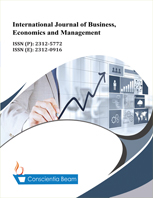Explaining Electricity Tariffs in Kenya
DOI:
https://doi.org/10.18488/journal.62.2021.82.119.133Abstract
Kenya has been struggling with increasing electricity tariffs. Several regulatory reforms introduced in the sector have not succeeded in lowering the electricity tariffs necessitating the need to investigate the push factors of tariffs. This study explained electricity tariffs by exploring the drivers of Kenya Power and Lighting Company (KPLC) tariffs and the scale of operation of KPLC. Using cost time series data from KPLC for the period 1986 to 2016 and Autoregressive distributed lag model (ARDL) an average cost function for KPLC was estimated. The results indicated average tariffs of electricity increased with price of labour and system losses and decreased with output and system load factor. KPLC was found to be enjoying economies of scale and density. Transmission and distribution of power should therefore be retained as a natural monopoly. The Government of Kenya should continue reforming power supply to reduce the system losses and price of labour. Incentives aimed at increasing the system load factor such as special tariffs should be introduced.

